#Anaerobic Digestion
Text

0 notes
Text
Anaerobic Digestion Market Application & Geography – Analysis & Forecast to 2031
The Insight Partners stands out as a reliable ally in the syndicated market research and consultation through its steadfast commitment to the market research industry. With extensive experience and proven dedication, we have been delivering outstanding outcomes. With a team of researchers catering to distinct business requirements, we can emerge as a trusted research partner in the past decade.
By prioritizing precision and trust ahead, we are proud to announce the addition of the latest offering titled “Anaerobic Digestion Market Growth Outlook to 2031”. This report ensures spotless coverage of recent updates and a range of business environment factors impacting the Anaerobic Digestion market growth. The meticulous approach opted by our researchers can assist companies in transforming business space into the Anaerobic Digestion market.
Anaerobic Digestion market report offers a comprehensive analysis of regional and global scenarios. The scope of the market report extends to the competitive landscape, cost analysis, key players, specific market regions, profit margin, and market situation. A glance at wide-ranging factors restricting Anaerobic Digestion market growth is deliberately included in this study.
Objectives of Anaerobic Digestion Market Report
To deliver a detailed market overview by integrating quantitative and qualitative analysis
To unveil growth strategies by evaluating the competitive landscape and examining key companies against their position and strategic advantage
To offer estimates on sales volume, market share, size, and CAGR for the projected period.
To offer segment wise insights
This detailed report on Anaerobic Digestion market size is heavily based on verified information and authoritative sources. The study intended to offer market players an overview of market opportunities in the coming period. This report helps clients as a first-hand source of knowledge on the market while providing a full-fledged analysis of each segment.
The study contains details on frontrunners in the market along with their recent collaborations, segments, revenues, product launches, and Anaerobic Digestion market trends. It projects the competition in the Anaerobic Digestion market for an estimated duration. This research further looks at industry channels and the performance of key market players to help businesses stay ahead in the market.
Our Report Sample May Brief On:
Scope of Anaerobic Digestion market report
Brief introduction of Anaerobic Digestion market and Industry Overview
Table of Contents
Top market players covered in this report
Report Structure
Research Methodologies by The Insight Partners
Regional Insights:
This section includes insights on different regions and key players present in the region. This section attempts to analyze the growth of a specific regional market based on economic, technological, and environmental factors. Readers may expect revenue-based data and sales insights gathered by our team after comprehensive research. This informative chapter remains an absolute perk for investors, as it will help them to understand potential investment value and expected returns in specific regions.
Report Attributes
Details
Segmental Coverage
Feedstock
Agriculture
Industrial
Municipal
Others
Types
Expanded granular sludge bed digestion (EGSB)
Internal circulation reactor (IC Reactor)
Upflow anaerobic sludge blanket (UASB)
Others
Application
Chemical industry
Food and beverage industry
Paper industry
Others
Regional and Country Coverage
North America (US, Canada, Mexico)
Europe (UK, Germany, France, Russia, Italy, Rest of Europe)
Asia Pacific (China, India, Japan, Australia, Rest of APAC)
South / South & Central America (Brazil, Argentina, Rest of South/South & Central America)
Middle East & Africa (South Africa, Saudi Arabia, UAE, Rest of MEA)
Market Leaders and Key Company Profiles
2G Energy AG
Anaergia Inc
Cargill Inc
Clearfleau Limited
Covanta Holding Corporation
Evonik Industries
Harvest Power
Parker Hannifin Corporation
Siemens AG
Xylem Water Solutions
Other key companies
Why The Insight Partners?
Proven Expertise: The Insight Partners comprises expert market research analysts who have extensive industry-specific knowledge. Through this report, our team is bringing years of experience to the table while safeguarding the accuracy of insights.
Actionable Insights: TIP relies on a combination of primary and secondary research methodologies that drive tangible results. We are committed to keeping our offerings clear, accessible, and concise to guide businesses in the decision-making process.
Integration of Technology: We embrace technology in all its forms as the core of our research tactics. We use various tools and platforms to analyze and interpret the data. This allows timely results.
Summary:
Current and Future Market Estimates- Anaerobic Digestion Market Share, and Size | 2031
Market Dynamics – Drivers, Challenges, Regional Trends, and Market Opportunities
Market Segmentation – Product, Application, End-use Industries, and Regional Growth Prospects.
Competition Matrix – Key Market Players and Strategies
Recent Developments and Innovation contributing Market Growth
About Us:
The Insight Partners is a one-stop industry research provider of actionable intelligence. We help our clients in getting solutions to their research requirements through our syndicated and consulting research services. We specialize in industries such as Semiconductor and Electronics, Aerospace and Defense, Automotive and Transportation, Biotechnology, Healthcare IT, Manufacturing and Construction, Medical Devices, Technology, Media and Telecommunications, Chemicals and Materials.
0 notes
Text
youtube
How is food waste recycled? It is widely acknowledged that food losses and waste (FLW) is a serious global problem and accounts for one-third of the CO2 emissions released each year. According to the Food and Agriculture Organization of the United Nations (FAO), approximately 1.3 billion metric tons of food are estimated to be lost or wasted globally each year. However, efforts to reduce food waste and improve surplus food management will never eliminate all food waste, so food waste recycling plays an important part in reducing greenhouse gas emissions and harnessing an otherwise wasted resource.
What happens to the discarded food, and how is food waste recycled?
#agriculture#biogas#engineering#food waste#operations#biogas plant#anaerobic digestion#food waste recycling#Agrivert#Youtube
1 note
·
View note
Text
Bio-Energy Market Report, Research Outlook, Products, and Application 2017 – 2032

Overview of the Bio-Energy Market:
The production, delivery, and use of energy obtained from biomass resources are all part of the bioenergy market. The term "biomass" refers to organic materials that can be used to create energy through a variety of processes, such as combustion, gasification, and biochemical conversion, such as plants, agricultural residues, forestry residues, and organic waste. Biomass may be refilled through sustainable practises, which is why bioenergy is regarded as a renewable energy source.
The global bioenergy market size was valued at $102.5 billion in 2020, and is expected to reach $217.8 billion by 2030, registering a CAGR of 7.6% from 2021 to 2030.
Key Factors Driving the Bio-Energy Market:
Transition to Renewable Energy: The bioenergy sector is significantly influenced by the global move to renewable energy sources. As a renewable and environmentally friendly substitute for fossil fuels, bioenergy helps to slow global warming by lowering greenhouse gas emissions.
Energy Independence and Security: By utilising a variety of energy sources, bioenergy can help with energy security. Countries with plentiful biomass resources can increase their energy independence and decrease their reliance on imported fossil fuels.
Government Policies and Incentives: Countless countries around the world have put policies and incentives in place to encourage the use of bioenergy. These policies stimulate the creation and application of bioenergy technology and include feed-in tariffs, renewable energy objectives, tax incentives, and subsidies.
Concerns for the environment and carbon neutrality: Bioenergy is regarded as a carbon-neutral energy source because the carbon dioxide.
Waste Management and Circular Economy: Bio-energy can play a role in waste management by utilizing organic waste materials for energy production. This contributes to the circular economy concept, where waste is seen as a resource, promoting sustainable resource utilization and waste reduction.
Technological Advancements and Efficiency Improvements: Advances in bio-energy technologies, such as improved biomass conversion processes, biofuel production techniques, and efficient combustion systems, enhance the efficiency and economic viability of bio-energy. Technological advancements make bio-energy more competitive and attractive in the energy market.
Regional Variations in Biomass Resource Accessibility: There are regional differences in the accessibility and availability of biomass resources. Countries with an abundance of biomass resources, such as forestry waste and agricultural wastes, provide favourable conditions for the development of bioenergy.
Rural Development and Job Creation: By generating jobs in the biomass production, processing, and bioenergy plant operations, bioenergy initiatives frequently have a favourable effect on rural regions. Rural development and economic expansion are aided by this.
We recommend referring our Stringent datalytics firm, industry publications, and websites that specialize in providing market reports. These sources often offer comprehensive analysis, market trends, growth forecasts, competitive landscape, and other valuable insights into this market.
By visiting our website or contacting us directly, you can explore the availability of specific reports related to this market. These reports often require a purchase or subscription, but we provide comprehensive and in-depth information that can be valuable for businesses, investors, and individuals interested in this market.
“Remember to look for recent reports to ensure you have the most current and relevant information.”
Click Here, To Get Free Sample Report: https://stringentdatalytics.com/sample-request/bio-energy-market/11393/
Market Segmentations:
Global Bio-Energy Market: By Company
• Abengoa Bioenergy
• Amyris
• BP
• Butamax Advanced Biofuels
• Ceres
• Enerkem
• Joule Unlimited
• LanzaTech
• Novozymes
• Sapphire Energy
Global Bio-Energy Market: By Type
• Bioethanol
• Biodiesel
• Biogas
• Others
Global Bio-Energy Market: By Application
• Transportation
• Off-grid Electricity
• Cooking
• Others
Global Bio-Energy Market: Regional Analysis
The regional analysis of the global Bio-Energy market provides insights into the market's performance across different regions of the world. The analysis is based on recent and future trends and includes market forecast for the prediction period. The countries covered in the regional analysis of the Bio-Energy market report are as follows:
North America: The North America region includes the U.S., Canada, and Mexico. The U.S. is the largest market for Bio-Energy in this region, followed by Canada and Mexico. The market growth in this region is primarily driven by the presence of key market players and the increasing demand for the product.
Europe: The Europe region includes Germany, France, U.K., Russia, Italy, Spain, Turkey, Netherlands, Switzerland, Belgium, and Rest of Europe. Germany is the largest market for Bio-Energy in this region, followed by the U.K. and France. The market growth in this region is driven by the increasing demand for the product in the automotive and aerospace sectors.
Asia-Pacific: The Asia-Pacific region includes Singapore, Malaysia, Australia, Thailand, Indonesia, Philippines, China, Japan, India, South Korea, and Rest of Asia-Pacific. China is the largest market for Bio-Energy in this region, followed by Japan and India. The market growth in this region is driven by the increasing adoption of the product in various end-use industries, such as automotive, aerospace, and construction.
Middle East and Africa: The Middle East and Africa region includes Saudi Arabia, U.A.E, South Africa, Egypt, Israel, and Rest of Middle East and Africa. The market growth in this region is driven by the increasing demand for the product in the aerospace and defense sectors.
South America: The South America region includes Argentina, Brazil, and Rest of South America. Brazil is the largest market for Bio-Energy in this region, followed by Argentina. The market growth in this region is primarily driven by the increasing demand for the product in the automotive sector.
Click Here, To Buy Premium Report: https://stringentdatalytics.com/purchase/bio-energy-market/11393/?license=single
Reasons to Purchase Bio-Energy Market Report:
• To gain insights into market trends and dynamics: this reports provide valuable insights into industry trends and dynamics, including market size, growth rates, and key drivers and challenges.
• To identify key players and competitors: this research reports can help businesses identify key players and competitors in their industry, including their market share, strategies, and strengths and weaknesses.
• To understand consumer behaviour: this research reports can provide valuable insights into consumer behaviour, including their preferences, purchasing habits, and demographics.
• To evaluate market opportunities: this research reports can help businesses evaluate market opportunities, including potential new products or services, new markets, and emerging trends.
• To make informed business decisions: this research reports provide businesses with data-driven insights that can help them make informed business decisions, including strategic planning, product development, and marketing and advertising strategies.
About US:
Stringent Datalytics offers both custom and syndicated market research reports. Custom market research reports are tailored to a specific client's needs and requirements. These reports provide unique insights into a particular industry or market segment and can help businesses make informed decisions about their strategies and operations.
Syndicated market research reports, on the other hand, are pre-existing reports that are available for purchase by multiple clients. These reports are often produced on a regular basis, such as annually or quarterly, and cover a broad range of industries and market segments. Syndicated reports provide clients with insights into industry trends, market sizes, and competitive landscapes. By offering both custom and syndicated reports, Stringent Datalytics can provide clients with a range of market research solutions that can be customized to their specific needs
Contact US:
Stringent Datalytics
Contact No - +1 346 666 6655
Email Id - [email protected]
Web - https://stringentdatalytics.com/
#Bioenergy#Renewable Energy#Biomass#Biofuels#Biogas#Bioethanol#Biodiesel#Waste-to-Energy#Sustainable Energy#Carbon Neutrality#Energy Production#Green Energy#Biomass Conversion#Feedstock#Energy Crops#Anaerobic Digestion#Cogeneration#Bioenergy Technologies#Bioenergy Applications#Biomass Power Plants#Bioenergy Industry#Bioenergy Market Trends#Bioenergy Policy#Bioenergy Investments#Bioenergy Economics#Bioenergy Sustainability#Bioenergy Advantages#Bioenergy Challenges#Biomass Supply Chain#Bioenergy Infrastructure
0 notes
Text
Beddington's 'dumping ground' now facing its own Suez crisis
A planning application from a multi-billion French-based waste company to develop a “green” gas-generating plant on Beddington Lane has encountered “vehement opposition” from at least one Sutton councillor, who says that his residents’ corner of south London is being turned into “a dumping ground for everyone else’s filth and waste”.
Suez already has planning permission to develop the site at…

View On WordPress
#Anaerobic Digestion#Beddington Lane#Beddington Lane incinerator#Beddington North#biogas#Croydon#Nick Mattey#Suez#Sutton#Sutton Council#Viridor
0 notes
Text
The Role of the Food Industry in Reducing Waste and Sustainability
Unexpected token F in JSON at position 0
Efforts to Reduce Food Waste in the Industry
A. Government regulations and initiatives aimed at reducing food waste
The government is taking a proactive approach to reducing food waste through various regulations and initiatives. Some of these initiatives include setting targets for reducing food waste, providing funding for research and development in…

View On WordPress
#anaerobic digestion#benefits for the environment and society#consumer education and awareness campaigns#food donation programs#food recovery programs#government regulations and initiatives#innovations in food waste management#local food banks partnerships#overproduction forecasting and planning#private sector initiatives and partnerships#sustainable waste management practices#the role of the food industry in reducing waste and sustainability
0 notes
Quote
The valuable organic materials in food by-products and human waste today can be safely returned to agricultural land as compost and digestate from anaerobic digestion. These inputs help rebuild soil organic matter, improve soil health, increase water infiltration and retention, prevent erosion, and allow the soil to sequester more carbon. Innovators transforming organic matter into agricultural inputs include Lystek, who use human waste to produce fertilisers and the Nutrient Upcycling Alliance, who use urban organic waste streams to produce fertilisers. Other innovators use organic matter to make animal feed, such as Agriprotein, who use black soldier fly to transform food waste into fish feed for aquaculture.
‘Eliminating food waste’, Ellen MacArthur Foundation
#Ellen MacArthur Foundation#food waste#organic materials#food by-products#human waste#compost#anaerobic digestion#Lystek#Nutrient Upcycling Alliance#Agriprotein
1 note
·
View note
Text
Good Options for Alternative Energy Sources
The world’s energy consumption continues to increase, and with it, the need for alternative energy sources that are sustainable and environmentally friendly. Traditional energy sources such as fossil fuels are finite and have a significant impact on the environment.
The use of alternative energy sources is essential to reducing carbon emissions and slowing down the effects of climate change. In…

View On WordPress
#Alternative energy sources#alternative power#anaerobic digestion#bioenergy#biogas production#biomass energy#biomass energy systems#biomass power#clean energy#climate change#climate solutions#community solar programs#community wind energy#community-scale biomass energy systems#cost-effective solution#decarbonization#energy efficiency#energy independence#energy transition#environmental impact#financial incentives#government incentives#green energy#grid-tied solar#home heating#hydro power#hydroelectric energy#hydroelectric power plants#low emissions#low maintenance
0 notes
Text
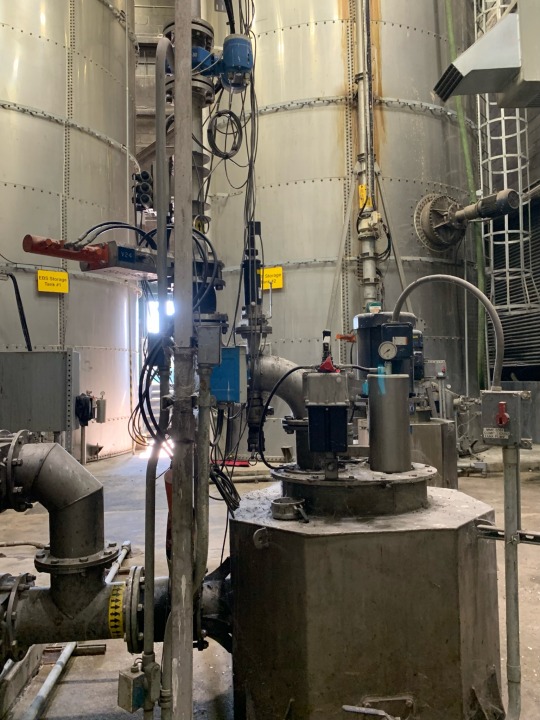
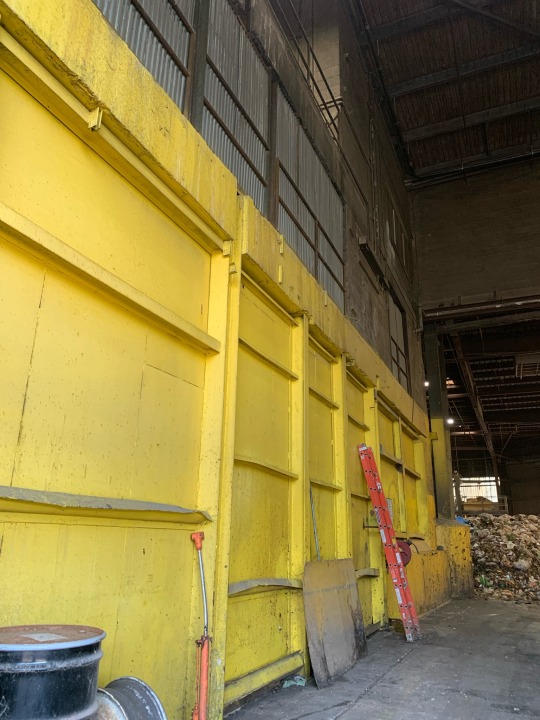
last day i work here before they change the route 😔
#in actuality its better because well be bringing all the stuff to get composted instead of going to anaerobic digestion#but sad cause i liked going here#mine
26 notes
·
View notes
Text
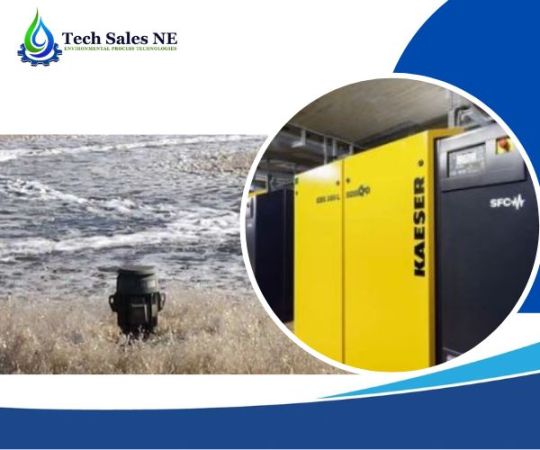
Anaerobic Digestion Plant Solutions
Visit: https://techsalesne.com
0 notes
Text
How Is the Water React Inside Sewage Treatment Plant?
Welcome to the exceptional global sewage treatment plant services, wherein water reviews excellent changes.
Ever surprised by what happens to the water that runs down the toilet and the drain?
The unsung hero that treats this wastewater and preserves the environment while guaranteeing cleanser water is the sewage treatment plant services. The water within the plant passes through a couple of stages to filter out pollutants and impurities.
The mechanical techniques are step one inside the system, in which paper and plastic detritus are removed using filters and screens. After that, the water undergoes biological treatments, wherein dangerous organisms and natural debris will break down through microorganisms. The next step is chemical treatment, wherein any microorganisms left are destroyed with the aid of disinfectants together with chlorine.

To ensure the water's safety, it's far often handled with UV mild after filtering to get rid of any final debris.
The sewage treatment plant services goal is to release the cleaned water again into the environment after completing this complex manner. By comprehending the inner reactions of water within the plant, we can understand the importance of this important infrastructure in maintaining the fitness of the surroundings.
Let's talk approximately this to gain a better comprehension.
What Is The Sewage Purification Plant's Operating System?
The sewage treatment plant works with the aid of transferring air to encourage the increase of microorganisms that break down sewage. The operation of the sewage treatment plants will eliminate all feasible harmful byproducts and recycling of them all will arise in diverse methods. A sewage treatment system cleans up contaminants from sewage wastewater from both residential and commercial resources. There are many treatment plants using chemicals, biological methods, or an aggregate of organic and chemical methods. The state's commercial operations heavily depend upon water. It purges the water of all probably dangerous substances and regenerates them.
The role of water in the sewage treatment process
Water plays a vital role in the sewage treatment system.
Here's a simplified explanation of its function:
Dilution:
Sewage incorporates numerous pollutants and contaminants. Water is useful for diluting the sewage, making it less difficult to handle and deal with. By including water, the attention of pollutants is reduced, allowing treatment methods to greater efficient.
Transport:
Water enables the transportation of sewage from homes, industries, and other sources to the treatment plant through a community of pipes or channels. It contains the sewage to the treatment plant wherein the purification method takes region.
Primary Treatment:
In the primary treatment level, water is useful in splitting large solid substances, along with debris, stones, and grit, from the sewage. This is normally performed in a settling tank, in which the heavier solids settle to the lowest, forming sludge, while the lighter materials float on the floor. The water purifier system helps with the separation manner with the aid of permitting the solids to settle and facilitating their elimination.
Secondary Treatment:
After the number one treatment, water enters the secondary treatment level. Here, microorganisms are delivered to the water to interrupt down organic resources, such as human waste, food scraps, and other biodegradable substances. These microorganisms eat the organic remember as their meal supply, converting it into carbon dioxide, water, and biomass. Water provides a medium for the microorganisms to thrive and perform the purification process.
Filtration:
In some sewage treatment plant services, water is going through filtration strategies to in addition put off remaining suspended debris and microorganisms. Filters, together with sand or activated carbon filters, entice and cast off these impurities, making sure to cleanse the water.
Disinfection:
To ensure safe drinking water for the surroundings or reuse, it undergoes disinfection. Water is usually treated with chemical compounds, inclusive of chlorine or ultraviolet (UV) mild, to kill any closing dangerous bacteria, viruses, or pathogens. This step facilitates prevent the spread of waterborne diseases.
Effluent Discharge:
Once the water has been dealt with and purified, it can be discharged into close by water bodies, along with rivers or oceans, without inflicting harm to the environment. Alternatively, dealt with water can be reused for numerous purposes like irrigation, commercial strategies, or as a source of drinking water in some cases. Reusing handled water allows conserving freshwater resources.
In summary, water is important in the sewage treatment plant.
The importance of monitoring water quality
Monitoring water best is vital for each industry and domestic area because of the following motives:
Human Health:
The number one importance of monitoring water excellence is to safeguard human health. Contaminated water can contain dangerous materials like bacteria, viruses, heavy metals, insecticides, and chemicals. Regular monitoring enables the discovery of any pollution that could pose a risk to human health, taking into account suitable movements to be taken, which include enforcing water treatment measures or issuing advisories to prevent intake or touch with infected water.
Early Detection of Pollution Incidents:
Continuous monitoring allows for the early detection of pollution incidents, which include chemical spills, leaks, or unintended releases. Rapid identification of such activities permits set off reaction and mitigation measures, minimizing the unfolding of pollutants and decreasing the capability impact on human fitness and the surroundings.
Water Resource Management:
Monitoring water first-class gives critical records for effective water resource management. It helps verify the suitability of water sources for one-of-a-kind functions including quality drinking water, irrigation, or business use. By identifying capability assets of contamination or deterioration, appropriate measures can be taken to defend and preserve water resources, ensuring their sustainable use for modern-day and future generations.
Environmental Protection:
Monitoring water quality is crucial for shielding the environment. Industrial sports and home areas can release pollutants into water our bodies, leading to contamination and degradation of aquatic ecosystems. Monitoring enables the detection and investigation of the impact of pollution on water ecosystems, making an allowance for timely interventions to prevent ecological harm and maintain biodiversity.
Source Identification:
Water quality tracking helps us become aware of the assets of pollutants. By studying the composition and traits of pollution, it becomes feasible to trace their foundation, pinpoint the accountable events, and take corrective moves to prevent future infection.
Risk Assessment and Management:
Assessing water greatly via monitoring helps in evaluating the dangers associated with water filteration systems and consumption. These facts are valuable for enforcing suitable risk management techniques, along with implementing water treatment technology, organising buffer zones, or issuing public fitness advisories.
As a consequence, we have emerged as one of India's leading vendors of wastewater treatment plants. As a result of earlier successful wastewater treatment plants, it's far identified as certainly one of India's top suppliers of wastewater treatment plants. Eventually, our specialists have the skills and know-how essential to offer dependable water purification solutions.
0 notes
Text
The Comprehensive Guide to Successful Turkey Farming: Tips, Techniques, and Best Practices
Introduction
Native to North America, the turkey is a large bird in the genus Meleagris. The wild turkey (Meleagris gallopavo) of eastern and central North America and the ocellated turkey (Meleagris ocellata) of the Yucatán Peninsula in Mexico are the only two species of turkey that still exist today.
Turkey farming has been around for a very long time and has strong roots in agriculture. The…

View On WordPress
#Anaerobic digestion in turkey farms#Artificial insemination in turkeys#Branding in turkey farming#Broad-breasted turkeys#Customer relationships in turkey farming#Domesticated turkey breeds#Eco-friendly turkey farming#Electric fencing for turkeys#Heritage turkey breeds#Natural pest control for turkeys#Organic turkey farming#Renewable energy from turkey farms#Resource-efficient turkey farming#Selling turkeys to local markets#Sustainable pest control in turkeys#Sustainable turkey farming#Turkey breed selection#Turkey breeding programmes#Turkey coop design#Turkey coop insulation#Turkey disease prevention#Turkey egg production#Turkey farm reviews and feedback#Turkey farm ventilation systems#Turkey farm weather challenges#Turkey farming best practices#Turkey farming industry trends#Turkey farming practices#Turkey farming profitability#Turkey feed efficiency
1 note
·
View note
Text
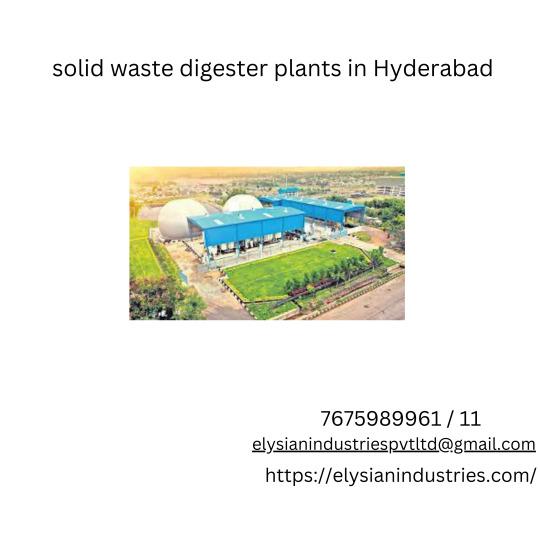
#Solid waste digester plants#Organic waste management#Anaerobic digestion in Hyderabad#Biogas production#Renewable energy generation#Sustainable waste management#Waste-to-energy plants#Environmental sustainability in Hyderabad#Solid waste treatment technologies#Waste management solutions in Hyderabad.
0 notes
Text
From Waste to Wealth: Transforming Trash into Sustainable Success
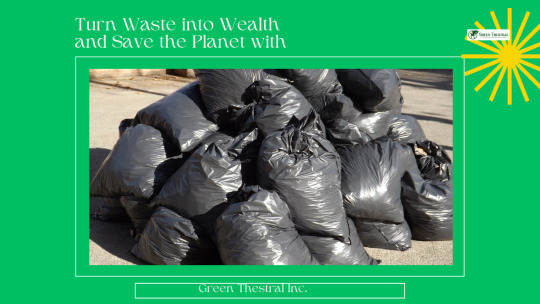
In a world grappling with environmental concerns and limited resources, the concept of "waste to wealth" holds tremendous promise. Waste, once perceived as a burden, is now recognized as a potential asset that can be transformed into a valuable resource. From recycling and upcycling to innovative technologies, this article explores the various ways in which we can turn waste into wealth, promoting sustainable practices and economic growth.
The Power of Recycling
Recycling has become a household term, but its significance cannot be overstated. By collecting and processing waste materials such as plastic, paper, glass, and metal, we can divert them from landfills and give them a new life. The recycling industry not only reduces the strain on our planet's resources but also creates employment opportunities and contributes to the circular economy. Governments and businesses worldwide are investing in recycling infrastructure and raising awareness to maximize the potential of waste recycling.
Upcycling: Adding Value to Discarded Materials
While recycling focuses on breaking down waste materials, upcycling takes a different approach by transforming them into products of higher value. Instead of downgrading the material, upcycling adds creativity and innovation to turn waste into desirable and unique items. From repurposing old furniture to creating fashion accessories from discarded textiles, upcycling has gained popularity as a sustainable alternative to conventional manufacturing. This practice not only reduces waste but also fosters creativity and entrepreneurial opportunities.
Innovative Technologies for Waste Management
Advancements in technology have revolutionized waste management, offering exciting possibilities for a greener and more sustainable future. One groundbreaking technology that has gained significant attention is waste-to-energy conversion. This process involves transforming organic waste into valuable biogas or biofuels through various techniques such as anaerobic digestion and pyrolysis.
Anaerobic digestion is a biological process that breaks down organic waste in the absence of oxygen, producing biogas as a byproduct. The organic waste, such as food scraps, agricultural residues, and sewage sludge, is placed in an enclosed tank where anaerobic bacteria decompose the waste and generate methane-rich biogas. This biogas can then be used as a renewable energy source for electricity generation, heating, or even as a vehicle fuel. The remaining digestate, which is a nutrient-rich residue, can be utilized as a natural fertilizer for agriculture, closing the loop on waste management.
Pyrolysis is another waste-to-energy conversion process that involves heating organic waste in the absence of oxygen, resulting in the production of biochar, bio-oil, and syngas. Biochar is a stable carbon-rich material that can enhance soil fertility and carbon sequestration, while bio-oil and syngas can be utilized as energy sources. This process can be applied to various types of organic waste, including agricultural residues, forestry waste, and even certain types of plastics.
The waste-to-energy conversion technologies not only offer a sustainable solution for waste management but also contribute to the production of renewable energy. By diverting organic waste from landfills, these processes help reduce greenhouse gas emissions, as landfilling organic waste leads to the release of methane, a potent greenhouse gas. Furthermore, the utilization of biogas and biofuels as energy sources helps decrease reliance on fossil fuels, mitigating the negative impacts of climate change and supporting the transition to a low-carbon economy.
While waste-to-energy conversion primarily focuses on organic waste, technology is also advancing to address the challenges posed by non-recyclable plastics. Traditional recycling methods often face limitations when it comes to certain plastics, such as multilayered packaging and mixed plastics that are difficult to separate and process. To tackle this issue, innovative technologies like plasma gasification and chemical recycling are being explored.
Plasma gasification is a high-temperature process that converts solid waste, including non-recyclable plastics, into a synthetic gas known as syngas. This syngas can be further utilized as a source of energy or as a chemical feedstock for the production of various materials. The process employs extremely high temperatures generated by an electric arc or plasma torch, breaking down the waste into its elemental components.
Chemical recycling, also known as advanced recycling or feedstock recycling, involves breaking down plastics into their molecular building blocks through various chemical processes. These building blocks can then be used as raw materials to produce new plastics, reducing the demand for virgin fossil fuel-based plastics. Chemical recycling has the potential to address the challenges posed by mixed plastics, post-consumer plastics, and plastics that are difficult to recycle through traditional mechanical processes.
By exploring and implementing these innovative waste management technologies, we can significantly reduce waste generation, minimize environmental pollution, and create valuable resources. Waste-to-energy conversion technologies provide a sustainable alternative to conventional waste disposal methods, generating renewable energy and reducing greenhouse gas emissions. Additionally, plasma gasification and chemical recycling offer solutions to the challenges posed by non-recyclable plastics, fostering a more circular economy and reducing reliance on fossil fuels.
As technology continues to advance and awareness of environmental issues grows, it is crucial to support and invest in these innovative waste management solutions. Collaboration between governments, businesses, and individuals is vital to drive the adoption of these technologies, promote sustainable practices, and pave the way for a greener and more sustainable future. By harnessing the power of technology, we can transform waste into wealth, mitigate environmental impacts, and build a more resilient planet for generations to come.
The Circular Economy Approach
The circular economy is an economic system that aims to minimize waste generation and maximize resource utilization. It emphasizes the concept of "closing the loop" by designing products that are durable, repairable, and recyclable. Through practices like product life extension, sharing economy models, and responsible consumption, the circular economy reduces the extraction of raw materials and promotes the efficient use of existing resources. By adopting a circular approach, businesses can not only reduce waste and costs but also enhance their brand reputation and contribute to environmental preservation.
Waste Management as a Business Opportunity
The transition from waste to wealth has opened up new avenues for entrepreneurs and innovators. Startups are emerging in various sectors, focusing on waste management and resource recovery. From companies that convert food waste into fertilizer to those that produce eco-friendly packaging materials, these businesses demonstrate the potential for profit while addressing environmental challenges. Governments and investors are supporting these ventures, recognizing their ability to create jobs, drive economic growth, and contribute to a sustainable future.
Community Engagement and Education
Creating a sustainable future requires collective action, and community engagement plays a crucial role. Education and awareness campaigns can help change people's attitudes and behaviors towards waste management. By promoting responsible consumption, waste segregation, and recycling practices, individuals can actively participate in the waste-to-wealth movement. Community initiatives, such as local recycling centers, composting programs, and upcycling workshops, provide platforms for collaboration and knowledge-sharing. Together, we can build a more sustainable and prosperous society.
Conclusion
The waste-to-wealth concept holds immense potential for addressing environmental challenges and creating economic opportunities. By embracing recycling, upcycling, and innovative technologies, we can transform waste into valuable resources, reduce landfill burden, and mitigate the depletion of natural resources. The circular economy approach and the rise of waste management startups further demonstrate the viability of turning waste into a profitable enterprise. However, achieving lasting change requires collective efforts, community engagement, and continuous education. Let us seize the opportunity to turn waste into wealth and build a sustainable future for generations to come.
#Waste to wealth: Transforming trash into valuable resources#Innovative waste management technologies for a sustainable future#Turning waste into renewable energy: Waste-to-energy conversion#From waste to biogas: The power of anaerobic digestion#Waste-to-energy: A greener solution for waste management#Sustainable success: Converting waste into wealth#Waste management revolution: Unlocking the potential of technology#Waste-to-energy technologies: A pathway to a circular economy#Pyrolysis: Transforming organic waste into biofuels#Plasma gasification: Tackling non-recyclable plastics for a greener future#Chemical recycling: Reshaping the plastic waste landscape#Waste-to-energy: A sustainable approach to waste management#Waste transformation: From burden to economic opportunity#Recycling and upcycling: Building wealth from waste#Waste management innovations: Redefining sustainable practices#Waste-to-wealth revolution: Creating value from discarded materials#Turning waste into resources: A roadmap to sustainability#Waste conversion technologies: Bridging the gap between waste and wealth#Waste-to-energy solutions: Powering a greener tomorrow#Sustainable waste management: Embracing the waste-to-wealth concept#Upcycling for a prosperous future: Redefining waste utilization#Waste-to-energy advancements: Paving the way for a circular economy#Waste-to-wealth strategies: Maximizing resource efficiency#Transforming waste into valuable commodities: The future of waste management#Waste conversion technologies: Innovations for a sustainable world#Waste-to-wealth practices: Shaping a more prosperous society#Waste management reimagined: Harnessing technology for a greener planet#Turning waste into renewable resources: The power of waste-to-energy#Circular economy and waste transformation: A pathway to sustainable growth#Waste-to-wealth initiatives: Driving economic and environmental benefits
0 notes
Link
0 notes
Text

Syker Systems Inc
Syker Systems is a safe and efficient means of dealing with your food waste at the source. From small family run restaurants to the largest sports stadia in the land, a Syker System will not only solve your food waste dilemmas but will do so in a way that’s friendly to the environment.
Address: 1935 11th Ave, Vernon, BC V1T 9A9, Canada
Phone: 778-692-1700
Website: https://sykersystems.com
0 notes